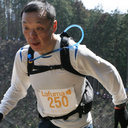Lectin histochemistry of human fetal notochord, ecchordosis physaliphora, and chordomas.
Słowa kluczowe
Abstrakcyjny
Lectin histochemical studies of human fetal notochord, ecchordosis physaliphora, and eight chordomas were performed. Ecchordosis physaliphora and eight chordomas were stained with Ricinus communis type I, Canavalia ensiformis, Triticum vulgaris, and Limax flavus. Ricinus communis type I, T vulgaris, and L flavus reacted with both tumor cells and the extracellular mucinous matrix, while C ensiformis mainly reacted with the cytoplasm of tumor cells. Thus, tumor cells were most recognizable with the C ensiformis stain. After neuraminidase treatment, ecchordosis physaliphora and chordomas invariably showed positivities for Arachis hypogaea. The lectin-binding patterns of chordomas closely reflected those of the human fetal notochord. Chordomas were completely sialylated regardless of either the clinical course or histopathological findings. Among the eight lectins, C ensiformis heavily labeled chordoma cells but not extracellular space. This was probably because asparagine-linked N-glycosylation was active in the chordomas, while the high-mannose-type oligosaccharides were apt to remain in the cytoplasm.


